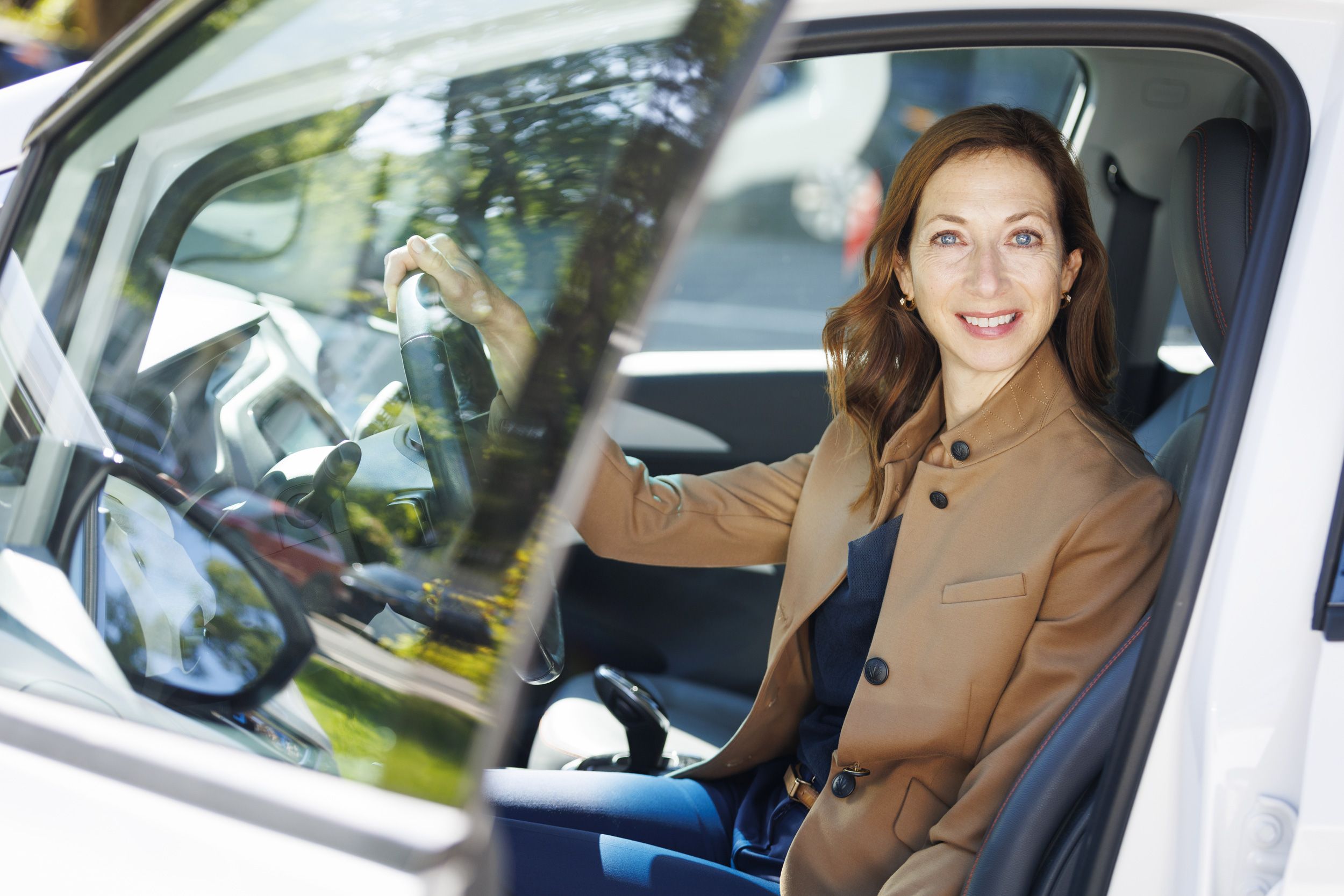Want Americans to love EVs? Fix this.

Want Americans to love EVs? Fix this.
U.S. consumers aren’t thinking about daily needs when buying a car, says former GM chief economist
Compared to gasoline-powered cars, electric vehicles can save money at the pump, produce less harmful emissions, and avoid high maintenance costs. Why then, are so few Americans switching to EVs? The main reason, according to Elaine Buckberg, senior fellow at Harvard’s Salata Institute for Climate and Sustainability, is the hassle of charging on the go.
In a recent talk at Harvard Kennedy School, Buckberg, a former chief economist for General Motors, explored the realities of commuting with an electric vehicle, and why the lack of charging infrastructure is preventing the shift in consumer behavior needed to reduce transportation emissions.
Transportation accounts for 28 percent of U.S. greenhouse gas emissions, and light-duty vehicles like passenger cars account for a total of 17 percent.
“We need to fix charging to sell EVs, to take internal combustion engine cars off the road over time and avoid emissions,” Buckberg said.
Realities for drivers
According to Buckberg, most electric vehicles on the market have a range of 230 miles or more on a single charge. For most Americans, that’s an average week of driving.
But consumers aren’t thinking about their daily, or even weekly, habits when considering making the switch to an electric vehicle, said Buckberg. What car buyers want is a vehicle that can reliably take them on a cross-country trip should the need arise.
“There’s no one-stop app to find chargers, which means it can be hard to find out whether a charger is working. Who’s responsible? Who do you tell when it’s broken? So they don’t get fixed.”
Elaine Buckberg
“What if some weekend, they needed to take both kids and drop them off in different places, one at a soccer match and one had, I don’t know, dance competition, and they were both long-distance,” she said. “That might be a problem.”
At present, Buckberg said, most EV owners are also homeowners with access to at-home charging. But public infrastructure — which would be crucial to expand EV ownership — is still spotty.
“So people who can’t charge at home, or maybe can’t also charge in their workplace, they’re really going to rely on public charging,” she said. “That’s generally city dwellers and renters.”
Publicly available chargers — including both Level 2, which take roughly three to five hours to reach a full charge, and fast chargers that can reach a nearly full charge in around 20 minutes — currently sit at around 61,000 across the country, according to Buckberg. That’s up from 46,000 last year.
“But not nearly keeping up with the stock of EVs,” she added.
For comparison, there are more than double the amount of gas-fueling stations in the U.S. — many with multiple pumps for use.
Buckberg added that there is little reliability in a charger working, and a lack of real-time data for drivers. According to her research, only 34 percent of charging stations share real-time data that apps like Chargepoint and PlugShare use to inform their users on where to plug in. On some of the highways her team has studied, the gaps in available data exceed 1,300 miles.
“There’s no one-stop app to find chargers, which means it can be hard to find out whether a charger is working,” she said. “Who’s responsible? Who do you tell when it’s broken? So they don’t get fixed.”
Potential policy solutions
Currently, the federal government is not prioritizing increasing EV purchasing, as has been a trend in recent years, she said. It has cut incentive programs, including tax credits and spending programs, to improve availability of real-time charger data for drivers.
According to Buckberg, this investment is crucial to increasing the share of EVs on the road and reaping the environmental benefits. Her research shows that universal real-time data on highway fast chargers would raise new EV sales by 6.4 percentage points in 2030 — or 3.5 million additional EVs on the road in 2030 compared to the status quo. That would grow the overall share of EVs on the road by 15 percent and in turn create a reduction in emissions of about 15 million metric tons, she said.
“Data transparency could cure range anxiety,” she said in her talk. “Imagine that you could go to Google Maps, you could go to Apple Maps, you could go to whatever is the killer new EV app, and you could get reliable information.”
But there is still hope, she said. In partnership with scholars Ari Peskoe, Carrie Jenks, and Eliza Martin at Harvard Law School, Buckberg’s team has developed example legislation for state governments that would establish common standards for EV-charging providers to increase the reliability of their data.
“No expensive federal investment or tax credits,” she said. “It’s a really cheap option at a time where we’ve got pullback of federal incentives that would raise the number of registered EVs.”
And, Buckberg said, having states take the lead would reduce resistance for charging providers that have not made sharing data a priority.
“From a state perspective, this could be justified because it yields benefits at very low cost,” she said.
Latest Harvard
- ‘Dry January’ helped drive drinking rates to 96-year lowHealth experts say rise of sober-curious movement, shifts in tech, meds likely made difference in wake of pandemic excess
- Time for mandatory retirement ages for lawmakers, judges, presidents?Americans seem to mostly say yes; legal, medical scholars point to complexities of setting limits
- Harsh past might bare its teethEarly adversity leads to higher aggression and fearfulness in adult canines, study says
- Brief bursts of wisdomAphorism lover and historian James Geary reflects on how ancient literary art form fits into age of social media
- Flew home as Will Flintoft, returned as Rhodes ScholarApplied math concentrator to study computer science, theology with eye toward AI
- What will AI mean for humanity?Scholars from range of disciplines see red flags, possibilities ahead






